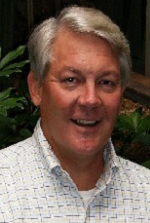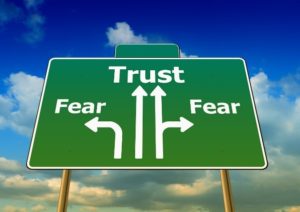Advancing Systemic Approaches to Mental and Emotional Well-being
By Jessica Grossmeier, PhD, MPH
June 6th, 2017, Minneapolis Hilton
Seminal HERO research demonstrates that stress and depression are two of the most costly health issues at a population level. For years the health promotion industry has responded with individualistic approaches in the form of stress management workshops and coaching; resiliency initiatives; and mindfulness programs. For individuals identified with more challenging issues, organizations often rely on referrals to employee assistance professionals and behavioral health specialists. These approaches are essential but insufficient to meet the burgeoning demands associated with contemporary challenges such as the need to create a psychologically safe work environment to foster innovation; managing downsizing and organizational change while sustaining high performance; and promoting social connection in a workforce that is increasingly global, widely dispersed, and offsite or remote.
Our challenge to HERO’s Summer Think Tank attendees and special guests were to identify ways to balance individualistic approaches to addressing mental and emotional well-being with systemic approaches that address the work environment and processes. To tee up our thinking and discussion about this weighty topic, we enlisted the help of researchers and practitioners: Dr. Monica Worline from Stanford’s Center for Compassion and Altruism Research and Education; Dr. Krystal Sexton from Shell Oil Company; and Dr. Mark Linzer from Hennepin County Medical Center. These three panelists shared their insights about what it takes to systematically develop a culture of caring. Key messages and highlights from their presentations follow, along with a high-level summary of thoughts generated during the interactive roundtable discussions that rounded out the morning.
HERO members can access the Archived Webinar of this Panel’s presentations in the HERO Resource Library.
 Dr. Monica Worline, Stanford Center for Compassion and Altruism Research and Education
Dr. Monica Worline, Stanford Center for Compassion and Altruism Research and Education
The purpose of a Think Tank is to inspire and challenge new ways of thinking about the issues of our day. There has been a lot of attention in our industry focused on positive psychology concepts such as gratitude, kindness, resilience, and mindfulness. Research demonstrates that evidence-based programs are effective in helping individuals to develop more effective ways to cope with significant life events as well as everyday challenges. Dr. Monica Worline helped us understand how her work with compassion research differs from positive psychology concepts in that compassion is a direct response to acknowledged suffering. This distinction is critical because it requires that organizations develop processes, routines, role definition, and networks that first and foremost help individuals, teams, and organizations identify and respond to suffering.
Compassion can often be confused as an emotion such as empathy, which is just one component of the 4 elements that comprise compassion:
(1) notice suffering;
(2) interpret suffering as relevant and meaningful;
(3) feel empathetic concern; and
(4) take action to alleviate suffering.
Some of the common misconceptions about compassion are that compassion is a trait that you either have or do not have; it’s fluffy and not relevant to the business or that it’s unprofessional; and that one must choose between either a compassionate response or a tough response to managerial and performance issues. After refuting each of these common misconceptions, Monica shared a summary of the evidence collected over the past two decades that demonstrates organizations perceived by employees as being more compassionate in their approach to doing business are more profitable and innovative; have higher levels of service quality and employee engagement; and are better able to attract and retain top talent even during times of downsizing or organizational change.
We wrapped up the conversation with Monica’s insights about how organizations can develop a systemic approach to compassion at work. Given the strong focus on culture change among organizations today, it’s common for organizations to want to address culture by trying to influence the values, beliefs, and assumptions about human nature that can influence a compassionate response. But Monica has found it’s harder to change these things in an organization so her colleagues have focused more on influencing change in how people think about their roles at work, developing processes or routines that make space for a compassionate response and creating networks social networks that pave the way for compassionate actions.
For more information about Monica’s work on compassionate organizations, please view her recent HERO webinar where she presented on the topic. You may be interested in the book Monica co-authored on Awakening Compassion at Work. Monica is available via email to answer any questions you may have or continue the discussion: mworline@stanford.edu.
 Dr. Krsytal Sexton, Shell Oil Company
Dr. Krsytal Sexton, Shell Oil Company
After Monica got us all thinking about how we might influence systemic changes in our organizations to foster compassion competence, we were eager for examples demonstrating that it was possible to inspire such change and that there are business results to show for it when an organization takes a systemic approach. Shell Oil Company’s Caring for People Initiative served as an apt illustration of both. Dr. Krystal Sexton described how Shell Oil Company was awakened to its need for a more compassionate approach when environmental conditions for field workers resulted in heightened awareness by leaders that conditions were not suitable for high performance.
In 2010, as the recovery began from the economic downfall of 2008-2009, Shell Health was asked to develop a stress management program for teams undergoing major organizational changes. After much research and consultation with academic and other experts, they began the development of their Resilience Program, the first program to address mental well-being in addition to physical health. The first Resilience Program rolled out in 2011, comprised of ten 60-minute modules, with each module built upon the American Psychological Association’s guidelines for developing resilience. It was completely employee-led, with a volunteer facilitator guiding the teams through didactic material, examples, exercises, and group discussions. The Program is evaluated using two sources: (1) Shell People Survey Employee Engagement and additional indices and (2) the Dispositional Resilience Scale 15, a validated 15-question survey that measures resilience in terms of challenge, control, and commitment. For the past four years, they have seen statistically significant positive associations between resilience and engagement, thriving, and inclusion. Knowing that engagement drives safety, Shell Health modified the program to a shorter format more suitable for operating sites and have now expanded even further into seafarers, aviation, and contractors. They are expanding the Resilience Program even more in 2017, to include all four constructs of Psychological Capital (hope, self-confidence, optimism, resilience) and using the validated PsyCap-24 questionnaire to measure its effectiveness in the Shell population.
The Resilience Program was the initial work into mental well-being and represented an individualistic approach. Since then, Shell Health has developed a more systemic approach with its Care for People Program. The Care for People (CfP) Program was developed after a successful pilot in one of Shell’s largest construction projects in history, and a cross-disciplinary, cross-business team of experts came together to determine what comprises caring for Shell’s workforce. Fourteen elements were suggested (e.g., Safe and Healthy Environment, Connections to Home, Ethical Labor Practices), and these elements were used to create the CfP Index. Shell links the CfP Index to business outcomes including engagement, safety, productivity, cost, etc. Shell Health staff members meet with project leadership to discuss the CfP plan and how it can be implemented. Taking into consideration specific concerns of each project, such as heat exhaustion in the South and potential bribes and unethical behavior in some underdeveloped countries, they work together with leadership to develop a CfP plan. Each of the fourteen elements is covered, and they consult the workforce on potential questions to measure the effectiveness of the CfP Program. They also do a gap analysis between the definitions of each element and what is described in the plan to assist the project leadership in implementing a comprehensive CfP program. They have community involvement in several of the ongoing projects, as well as educational programs, wellness programs, and communication efforts.
For more information about Shell Health’s Care for People initiative, join us for a follow-up HERO webinar on August 17 at 1:00 CT. This webinar will be recorded and archived for HERO members.
 Dr. Mark Linzer, Hennepin County Medical Center
Dr. Mark Linzer, Hennepin County Medical Center
Dr. Mark Linzer wrapped up this engaging panel by sharing the research he and his colleagues have been doing at Hennepin County Medical Center (HCMC) on systemic approaches to address physician stress and burnout. Their research began with the Physician Worklife Study with the support of the Robert Wood Johnson Foundation, which included surveying 5,000 physicians and demonstrating the importance of patient relationships, as well as the challenges of lack of control of the work environment and of time pressured office visits. That study was followed by a longitudinal national study for AHRQ on work conditions in 119 primary care offices; how these conditions related to clinician stress and burnout; and how those reactions related to patient quality and safety. They found that clinicians were deeply affected by adverse work conditions. There were 4 powerful predictors of adverse outcomes for physicians and patients: time pressure, lack of control, chaotic environments and lack of values alignment with leaders. Their next study for AHRQ was the Healthy Work Place Study. This was a randomized trial of interventions to improve the work environment for clinicians in 34 offices in the Midwest and New York City, testing if these could reduce stress and burnout and improve outcomes for patients. Three types of interventions succeeded in reducing stress or improving satisfaction: workflow redesign, communication improvements, and quality improvement programs in chronic disease management. Their current study, also funded by AHRQ, tests the hypothesis that the electronic medical record is the source of a great deal of stress for clinicians, and that there are means to improve this stress to improve quality of worklife for clinicians and quality of care for patients. Their ongoing measurement work at HCMC includes administering annual surveys using a brief 10-item measure of worklife and wellness called the “mini-z”. The survey identifies stress, burnout and their predictors, and provides a roadmap for department chairs to reduce stress, improve productivity and quality of care, and reduce turnover.
Building a culture of caring within HCMC requires building relationships. Dr. Linzer spends time in the executive office corridor periodically stopping in and speaking with the CEO, CCO, CMO and other leaders. He shares observations or data, and seeks their input on means to improve worklife throughout the hospital. One project was to raise funds for a workout room and wellness center, which was completed one year ago. There is now a dedicated space with five machines for working out plus weights, a shower and changing area, a dining area, and a soft carpet with yoga mats for meditating. They have reflection rounds for working through challenging events, and a separate reset room with quiet music and dim lighting for taking a break between challenging cases.
In preparation for the Think Tank, Dr. Linzer and his research team adapted their mini-z survey tool and for use with a non-medical audience. The survey questions and scoring instructions are available by clicking here. Dr. Linzer would be delighted to field questions about how to trial it at your organization: Mark.Linzer@hcmed.org. The underlying principles: lack of control, chaos, time pressure, values alignment and team work, may well be generalizable and they’d be thrilled to partner with others who wish to test this out.
Interactive Discussions
In typical Think Tank fashion, we concluded the morning by convening Think Tank members into small groups to debate, discuss and report out on the morning’s challenge to incorporate more systemic approaches into their organizations’ initiatives. A brief summary of key insights follows.
- Compassion may not get on a corporate agenda without linking it to issues such as performance and retention. It must be linked to human capital business strategy.
- Employees sometimes object to employer involvement in sensitive health issues, so any initiative that attempts to address mental and emotional well-being must be perceived as genuine. A focus on compassion can break down barriers if it’s genuine.
- We have to be careful not to make a program out of compassion initiatives. It requires building trust and a thoughtful process.
- Compassion initiatives could align nicely with organizational philanthropic activities.
- Senior leadership support is important to set the tone and magnify support but reaching middle managers with this message is key to executing any endeavor effectively.
- Think Tank attendees said they would like to challenge their organizations to more heavily weight their focus and resource investment into organizational systemic approaches at a 3:1 ratio with individualistic approaches.
Several potential strategies for organizations to consider for developing a more systemic approach include:
- Get a written statement from the c-suite about the business relevance of building a culture of caring.
- Provide leadership training and expectations that they would role model a more caring approach.
- Provide specific training for middle management to help them understand how to incorporate a more caring approach into tough conversations about downsizing, organizational change, and performance issues.
- Develop “policies of care” to operationalize this.
- Address the built environment to create spaces that foster collaboration and higher quality social connections.
- Evaluate efforts but keep it simple.
Proceedings HERO Summer Think Tank
Advancing Systemic Approaches to Mental and Emotional Well-being
By Paul Terry, Ph.D. and Emily Wolfe, MSW, LCSW, CHWC
June 6th, 2017, Minneapolis Hilton
It may well have been the most personal, bordering on precarious, ice-breaker ever used to open a HERO Think Tank. Referencing well-validated items from Harvard’s Health and Human Performance Index I asked participants: “How many days during the past 30 days was your PHYSICAL HEALTH not good (due to physical illness and injury)?” This question was followed by the punch line concept for the day’s proceedings: “For how many days during the past 30 days was your MENTAL HEALTH not good (due to stress, depression, and problems with emotions)?” To offer Think Tank members an easy out, I said: “Turn to one or two others and share your answer and if you’re not comfortable making this a personal disclosure feel free to answer how you think the average employee in your organization would answer.” Following uncomfortable laughs from some in the audience, I moved around the room and observed that, nevertheless, everyone was speaking from their personal experience. At the end of the ice-breaker conversations I asked for a show of hands from those who had more emotional than physical problems lately and the response mirrored the results from the Harvard survey. That is, for most, we are 2 to 3 times more likely to experience stress and severe anxiety than physical issues.
I wasn’t surprised that the life stress of health promotion and human resources professionals would trend similar to most that Harvard surveys. I did reflect back to the participants, however, that I felt their willingness to speak about mental health on such a personal level about a difficult, even stigma-wrought topic, interrelates with what makes us happy and engaged as professionals. Says Martin Seligman, the father of positive psychology: “Use your signature strengths and virtues in the service of something much larger than you are.” Our Think Tank members showed that they considered transparency and vulnerability to be a virtue that would enable us to deal openly and honesty with how hard and slow it can be to change organizational cultures.
The ingenuity of HERO Think Tanks relates in no small part to the communion of the expertise of human resources professionals alongside health and well-being experts. Harvesting intellectual products from the cross fertilization of these skill sets have become a signature strength for HERO. What’s more, engaging in mental and emotional human resources and health topics not only taps our professional strengths, it touches on the highest of Seligman’s defining attributes of happiness; that of realizing our life’s meaning and purpose. (Seligman, 02’) It was clear to me at this Think Tank that most HERO members come to work to improve the lives of others along with advancing the business objectives of their companies.
My assessment is that Think Tank members were willing, even eager, to engage throughout this day from both their heads and their hearts because sharing our personal stories is likely what it will take to change our organizational stories. To challenge Think Tank members, we recruited a panel of experts to be our afternoon conversation starters who promised to focus on the “systemic” approaches in their organizations. We featured leaders from Shell Oil, University of Michigan, General Mills and 3M who, as you will see below, had poignant as well as data-supported stories to share about their organizational responses to issues ranging from suicide and workplace violence to low morale and site level disenfranchisement. Some excerpts and bullet points from their presentations follow.
HERO members can access the Webinar of this Panel’s presentations in the HERO Resource Library.
 LaVaughn Palma-Davis, University of Michigan
LaVaughn Palma-Davis, University of Michigan
Palma-Davis described the University of Michigan’s (UM) “integrated organizational model” that included oversight and joint planning with counseling, occupational services, and wellness/health services. She noted that UM is now weaving in leadership development and diversity training given how directly this relates to the success of culture change and individual behavior change initiatives. LaVaughn also shared information about UM’s wellness champions network and how the simple act of encouraging others to move, walk and talk, (i.e. getting nurses to take their breaks!) is also becoming an integral part of their inclusion and caregiver model initiatives. Related to this, UM has an internal Employee Assistance Program (EAP) that she describes as “part of the fabric of the organization.” Says Palma-Davis, “If you want to know what’s going on with employees at UM, talk to an EAP counselor.” A focus area for LaVaughn and her team has been “addressing the stigma that prevents people from receiving help and accepting help. By working on de-stigmatization, for example, our ‘Understanding You program’ we help employees understand that the program is confidential, that our EAP system is completely separate from all other systems.”
 Adria Gerber, General Mills Inc.
Adria Gerber, General Mills Inc.
Adria Gerber discussed the importance of leveraging existing health and wellness services and ensuring that employees know how to locate and access them. General Mills focuses on opportunities to partner with the philanthropic arm of their company, thereby highlighting components of love and compassion, while also building upon natural employee interests. General Mills provides systemic well-being services from both a “top down and bottom up” approach, some examples include employee wellness champions, rethinking how they develop talent and making connections with employees and managers through health and wellbeing mentoring opportunities. By creating connections between internal silos of services within the company (e.g. HR, EAP, OD), partnerships are built that more effectively help employees access resources when they need it. “It’s an evolution, not a revolution.”- Adria Gerber
 Mark Poindexter, Shell Oil Company:
Mark Poindexter, Shell Oil Company:
One sentence that describes the culture of Shell Oil per Mark Poindexter is, “We are an evolving company and a learning company.” By way of sharing a personal story, Mark gave a real-life example of building culture through vulnerable storytelling and avoiding a crisis, further discussing both the value of “Safety Moments” as well as “Help Moments.” Shell focuses on multiple levels of management for emotional well-being programs and support, while also keeping a focus on traditional physical health issues such as stress, COPD, Diabetes, obesity, and injuries. Examples of employee well-being initiatives that Mark described include their wearables program, “Think Well” program and fitness centers.
 Michelle Morris, 3M
Michelle Morris, 3M
Michelle Morris describes 3M’s EAP program as an internal hybrid, consisting of 65 contracted professionals across the U.S. located onsite at facilities, enabling them to truly understand the employee population being served. She emphasized that 3M does not have a one size fits all model and they are sensitive to meeting the differing needs of employee populations and individual issues. She described 3M’s “integrated organizational model” as one that included joint planning with other program partners such as EAP, HR, security and performance management. To address stigma related to mental health and EAP usage, as one example, 3M developed a “Happiness Challenge” pilot program discussing topics like employee “curiosity, creativity, connection” that get beyond traditional mental health issues. Michelle mentioned change initiatives driven by 3M’s Business Transformation group in partnership with EAP. This group explores the human side of resiliency and builds programs that better support employees’ resiliency as they adapt and respond to change within the organization.

Well-being Starts and Ends with TRUST
The well-being movement brings a refreshing, if not retro, orientation toward emotional, financial and community contributions to employee health and engagement. Still, the movement has arrived with a noticeable orientation toward individual level approaches to improvement such as resiliency campaigns, financial well-being workshops and Tai Chi classes.
Steven Covey’s book, “The Speed of Trust,” posits that trust is “the one thing that changes everything” relative to organizational success and quantifiable business value. HERO hosted a Think Tank meeting for our members this summer on “Systemic Approaches to Improving Mental and Emotional Well-being.” Throughout our day-long sessions, I observed that our participants did not put an emphasis on the speed at which they worked to build trust between clients, leaders and employees, but rather, they focused on the challenges they were embracing to create better integration between their health and well-being initiatives. How is our strategic planning influenced, they asked, when we better integrate data and analysis about our employee assistance services and employee engagement, satisfaction and loyalty? Trust, it seemed to me, was an implicit goal that participants understood could not be rushed.
Throughout our Think Tank discussion sessions with employers, wellness providers and employee assistance program experts, the practical experience of the companies present seemed to me to ratify the technical recommendations from expert panels on what it takes to be successful in employee health improvement. For example, in 2008, a Centers for Disease Control and Prevention (CDC) expert panel produced the “Essential Elements of Effective Workplace Programs and Policies for Improving Worker Health and Wellbeing.” (CDC 2008). Just as the experts advised, our Think Tank panelists spoke to the need to “demonstrate leadership… engage mid-level management… establish clear principles and integrate relevant systems.” (CDC Essential Elements PDF).
I started the Think Tank’s morning sessions by citing the first “essential element” recommended by the CDC panel is that of “Developing a ‘human-centered’ culture” which was characterized as: “Effective programs thrive in organizations with policies and programs that promote respect throughout the organization and encourage active worker participation, input, and involvement. A human-centered culture is built on trust, not fear.” (My emphasis added.) During our closing session late in the afternoon of the Think Tank we organized members into small groups to debate, discuss and report out on the day’s issues. An overarching question we considered was: “If you led a systemic approach to employees caring for each other in your organization, what 3 highest strategic priorities would you propose?” Here is what the groups generated:
- Building Trust
- Leadership Philosophy
- Communication
- Manager Training
- Measurement
These strategic priorities were derived from groups that generated long lists of ideas. The ideas were listed then they were pooled, categorized and voted on according to their contribution to the group’s view on the highest strategic priorities. A closing exercise with all of the Think Tank members involved “nominal group rankings” which involves a series of voting exercises that compared each of the elements generated by the small groups, one against another. And just as the day’s session had started with references to the role of trust in successful well-being initiatives, the day ended with trust surfacing as the most essential element for taking a systemic approach to advancing mental and emotional well-being.
Reducing Stigma and Increasing Awareness via Data
Where the word ‘trust’ trended throughout the day as a fundamental precursor to advancing a systemic approach, we also reviewed how addressing stigma, privacy issues and better data integration were also fundamental building blocks for a systemic approach. Our panelists discussed how stigma is a prime barrier to activating employees to engage in resiliency campaigns or share their mental health problems. To address this we asked Think Tank members:
“Develop your top three learning objectives for a campaign to make it feel safer in your organization to discuss emotional issues.”
We also reflected on Congresswoman Foxx’s proposed “Preserving Employee Health Promotion” bill. The draft legislation generated a national debate and angst among consumer advocates that employee privacy protections in wellness are at risk and eroding. We charged members with:
“Identify the top three methods an organization can use to make privacy a minimal issue with respect to employee mental and emotional health promotion.”
Insufficient or poorly organized data is a barrier to addressing mental and emotional health in the workplace. Few organizations have integrated employee health and well-being data with employee engagement, satisfaction, loyalty and/or perceived organizational support data. Fewer still have integrated these data with business performance.
References:
- Seligman, Martin E.P. (2002). Authentic Happiness: Using the New Positive Psychology to Realize Your Potential for Lasting Fulfillment. New York, NY: Free Press.
- “Essential Elements of Effective Workplace Programs and Policies for Improving Worker Health and Wellbeing.” (CDC (Centers for Disease Control and Prevention) 2008). CDC Essential Elements PDF
- Steven Covey: “The Speed of Trust”
